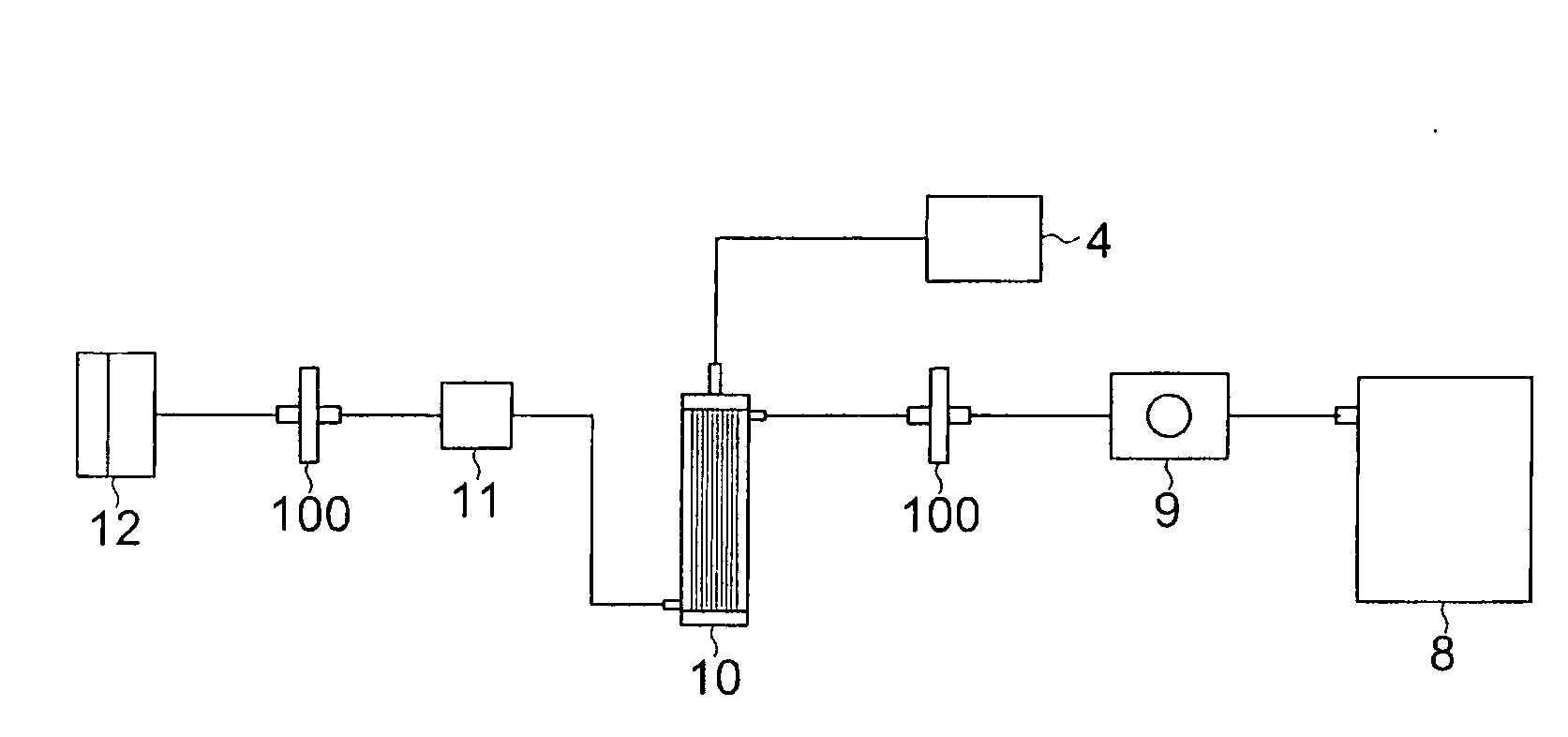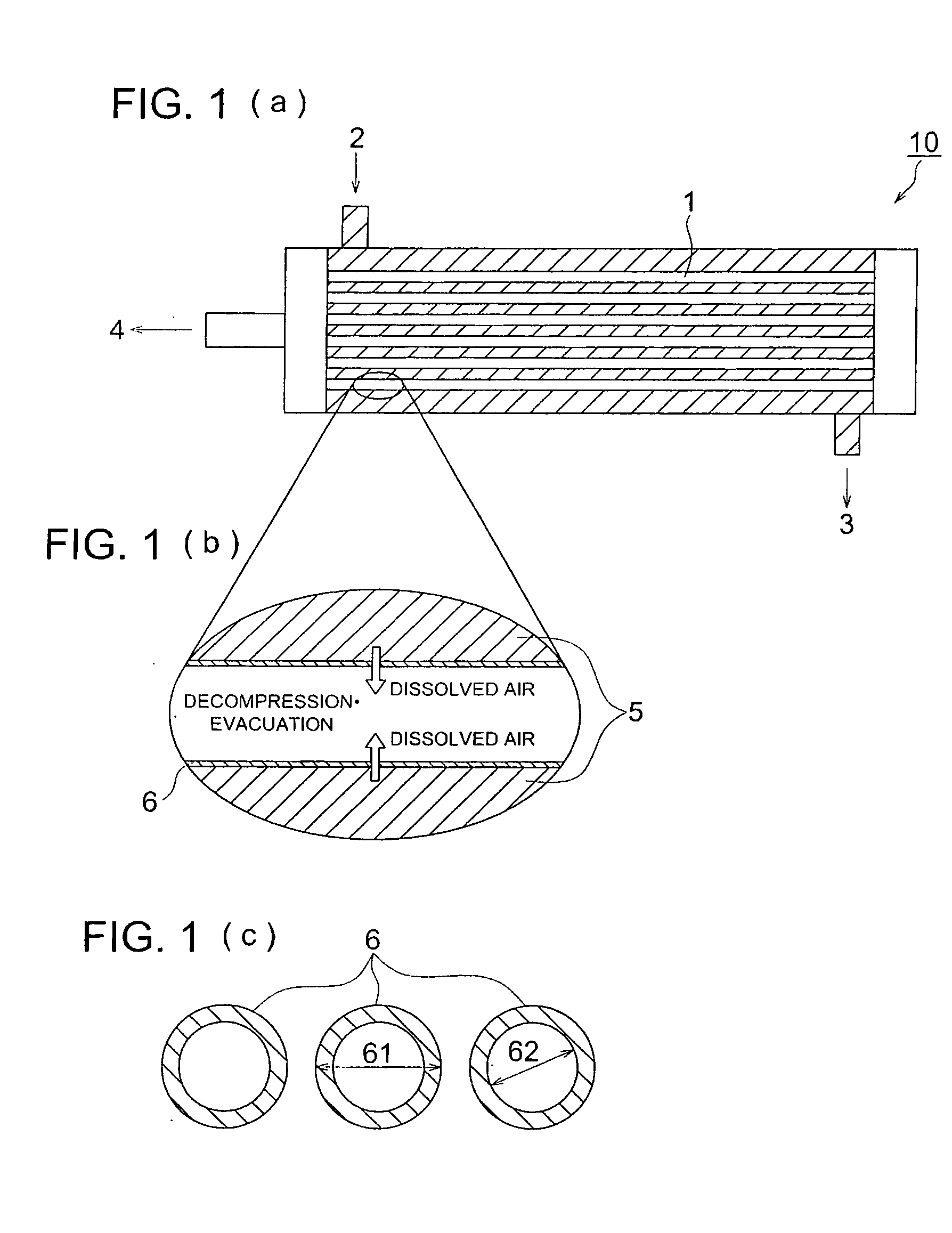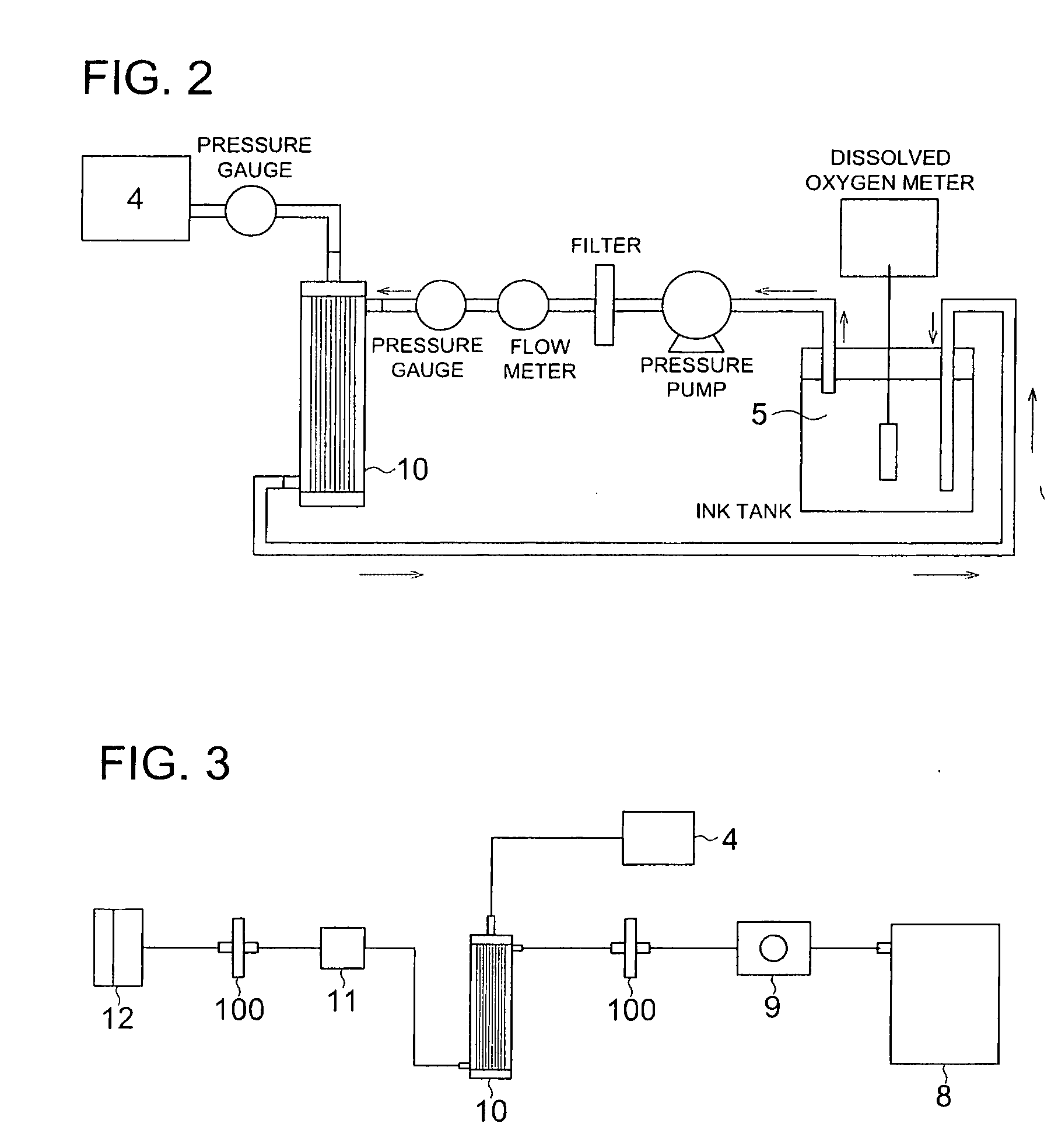Degassing method of ink-jet ink, production method of ink-jet ink and ink-jet printer
- Summary
- Abstract
- Description
- Claims
- Application Information
AI Technical Summary
Benefits of technology
Problems solved by technology
Method used
Image
Examples
example 1
Preparation of Ink 1
[0139]According to the formula of dispersion below, a pigment, a water-based solvent, and a high molecular weight dispersing agent were weighed and blended, and the total mass of the mixture was adjusted to 100 parts with deionized water. The resultant solution was initially mixed with a dissolver, and the mixed solution was subjected to dispersion via a bead mill (for example, MiniCer, produced by Ashizawa Finetech Ltd.) filled with 340 g of zirconia beads to prepare a Pigment Dispersion 1.
C.I. Pigment Blue 15:315partsJONCRYL 61J (produced by Johnson Polymer Co.)6parts(solid contents)glycerin20parts
[0140]Subsequently, based on the formula of an ink below, each component was weighed and blended, followed by filtration of the mixture employing a #1000 mesh metal filter to prepare an Ink 1.
Pigment Dispersion 120partsethylene glycol20partsglycerin15partstriethyleneglycolmonobutylether5partsOLFINE E1010 (produced by Nissin Chemical0.6partIndustry Co., Ltd.)deionized ...
example 2
Preparation of Ink 1
[0167]According to the dispersion formula below, a pigment, a water-based solvent, and a high molecular weight dispersing agent were weighed and blended, and the total mass of the mixture was adjusted to 100 parts with deionized water. The resultant solution was initially mixed with a dissolver, and the mixed solution was subjected to a dispersion via a bead mill (for example, MiniCer, produced by Ashizawa Finetech Ltd.) filled with 340 g of zirconia beads to prepare a Pigment Dispersion 1.
C.I. Pigment Blue 15:315partsJONCRYL 61J (produced by Johnson Polymer Corp.)6parts(solid contents)glycerin20parts
[0168]Subsequently, based on the formula of an ink below, each component was weighed and blended, followed by filtration of the mixture employing a #1000 mesh metal filter to prepare an Ink 1.
Pigment Dispersion 120partsethylene glycol20partsglycerin15partstriethyleneglycolmonobutylether5partsOLFINE E1010 (produced by Nissin Chemical0.6partIndustry Co., Ltd.)deionized...
example 3
Preparation of Inks
[0184]Inks 1-3 were prepared in the following manner.
[Preparation of Pigment Dispersions]
[0185]According to the formula of dispersion below, a pigment, a water-based solvent, and a high molecular weight dispersing agent were weighed and blended, and the total mass of the mixture was adjusted to 100 parts with deionized water. The resultant solution was initially mixed with a dissolver, and the mixed solution was subjected to dispersion via a bead mill (for example, MiniCer, produced by Ashizawa Finetech Ltd.) filled with 340 g of zirconia beads to prepare a Pigment Dispersion 1.
Formula of Pigment Dispersion 1
[0186]
Carbon black (Mitsubishi MA100: produced15partsby Mitsubishi Chemical Co.)Disperbyk 190 (Big Chemie Corp.)6parts(solid contents)Dipropyleneglycolmonomethylether20parts
[Preparation of Ink 1]
[0187]Subsequently, according to the formula of the ink below, each component was weighed and blended, followed by filtration of the mixture employing a #1000 mesh met...
PUM
 Login to View More
Login to View More Abstract
Description
Claims
Application Information
 Login to View More
Login to View More - R&D
- Intellectual Property
- Life Sciences
- Materials
- Tech Scout
- Unparalleled Data Quality
- Higher Quality Content
- 60% Fewer Hallucinations
Browse by: Latest US Patents, China's latest patents, Technical Efficacy Thesaurus, Application Domain, Technology Topic, Popular Technical Reports.
© 2025 PatSnap. All rights reserved.Legal|Privacy policy|Modern Slavery Act Transparency Statement|Sitemap|About US| Contact US: help@patsnap.com



